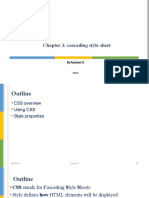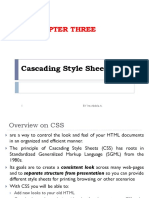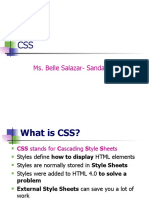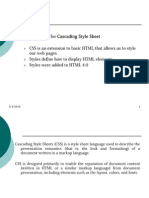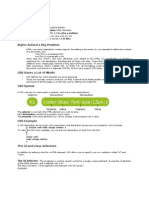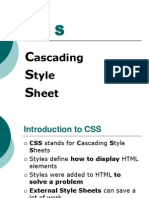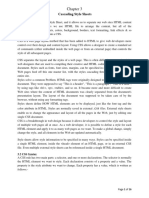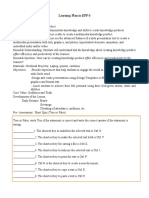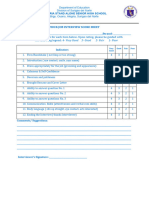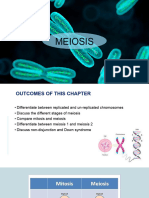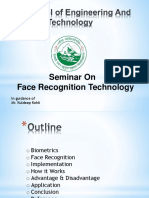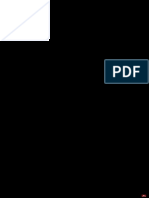0% found this document useful (0 votes)
28 views33 pagesCascading Style Sheets (CSS)
The document provides an introduction to Cascading Style Sheets (CSS), explaining its purpose in controlling the layout and style of HTML documents. It covers the structure of CSS, including selectors and declaration blocks, and discusses the advantages and disadvantages of using CSS. Additionally, it outlines the three types of CSS: inline, embedded, and external styles, along with the concept of MIME types and cascading order in style application.
Uploaded by
quintanamajudymae69Copyright
© © All Rights Reserved
We take content rights seriously. If you suspect this is your content, claim it here.
Available Formats
Download as PPTX, PDF, TXT or read online on Scribd
0% found this document useful (0 votes)
28 views33 pagesCascading Style Sheets (CSS)
The document provides an introduction to Cascading Style Sheets (CSS), explaining its purpose in controlling the layout and style of HTML documents. It covers the structure of CSS, including selectors and declaration blocks, and discusses the advantages and disadvantages of using CSS. Additionally, it outlines the three types of CSS: inline, embedded, and external styles, along with the concept of MIME types and cascading order in style application.
Uploaded by
quintanamajudymae69Copyright
© © All Rights Reserved
We take content rights seriously. If you suspect this is your content, claim it here.
Available Formats
Download as PPTX, PDF, TXT or read online on Scribd
/ 33
